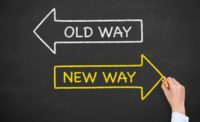Over the last 30 years, I have attempted to bring the readers into the middle of the code change hearings to understand the process as plumbing and mechanical code requirements are developed and implemented. I hope I have been successful.
During that time, I have served as a voting member of various code and standard committees. For the last 21 years, I have been a voting member of the IAPMO Uniform Plumbing Code Technical Committee.
This year, just days before the start of the IAPMO Plumbing Code Technical Committee meeting, I was asked to step in as interim chair of the committee. Unfortunately, Chairman Dan Daniels was unavailable. Having known Dan for many years, and watching him eloquently chair the committee, I knew they were big shoes to fill. IAPMO staff asked me to chair knowing that I had experience in chairing other IAPMO Committees.
When chairing an ANSI Committee, there are certain obligations and requirements that need to be followed. The chairman must be unbiased and allow discussion on all sides of an issue. You need to have a firm understanding of Robert’s Rules of Order and the IAPMO procedures. Finally, you must control the flow of a meeting.
Unfortunately, thanks to the COVID-19 pandemic, the Technical Committee meetings were virtual. The regrettable part is that participation by non-committee members did not seem as fair as in-person meetings. Anyone wishing to testify had to register ahead of time. Each participant was given two minutes on a given proposed code change. There was only one shot, with no rebuttal testimony. While it seems less fair, this was the first meeting of the code cycle. There are three more opportunities for an individual to testify on a code change. Next year’s meeting, reviewing the comments to the proposed code changes, will be in-person.
The downside of serving as chairman is you are somewhat restricted from testifying on an issue. Again, the chairman should be unbiased to allow debate. Having submitted a number of code changes, there went the possibility of testifying in support of those changes. While it was a personal sacrifice, it was for the good of the organization.
IAPMO procedures require a written statement for any code change that is either modified or rejected. The statement must be technical in nature. This would be the true test of my ability to chair the committee. All too often you hear a motion to reject a change with the reason being, “I just don’t like it,” or, “The current code is adequate.”
Whenever I heard comments like this, my immediate response was, “Why don’t you like it, what is the technical reason for rejecting the change?”
Other times I would ask, “Why is the current code adequate, what is wrong with the proposed change?” Essentially, I was forcing the committee to always follow the rules in providing proper technical justification for their actions.
Hearing the technical reasons for changes was sometimes frustrating, and at other times, humorous. The humor was associated with what you consider a completely inappropriate technical reason. As chairman, you want to respond, “Say what! That’s your reason?” Instead, you respond, “Thank you for your technical justification, did I get that accurately?” Basically, you are trying to lead your colleague into giving a better reason.
The frustration rises when you hear a technical reason that is just outright wrong. Again, you wish you can say that. However, the only permitted response from the chairman is to question the accuracy of the comment.
At one point, there was a change recommended for rejection. The reason stated was, “There was inadequate technical justification provided to support the code change.”
If it was an in-person meeting, I probably would have stared down the committee member. Being virtual, I responded, “I don’t think you want to state that since the proponent submitted an extensive amount of documentation regarding the proposed change.”
The response was, “He did? If he submitted documentation, I didn’t read it.” Oops, you never admit that you didn’t do your homework prior to the Technical Committee meeting. Committee members are provided with an extensive amount of information that has been submitted with the code changes. Our obligation is to review all of the documentation. I can attest that, for a month, you bury yourself in reviewing all of the proposed changes, supporting documentation and updated standards.
Fortunately, during the discussion of this proposed change, another Committee member jumped in and stated, “The documentation submitted does not justify the proposed numbers in the code change. While there was significant documentation, the technical documentation was not correlated with the change.”
The motion to reject this change was actually appropriate. The proposed code change did not correlate with the documentation that was submitted. Had I been able to make the initial motion, I would have also made a motion to reject the change.
As the meeting progressed day after day, I would often have to open the meeting with a warning to the Technical Committee. One morning I started off by saying that we are dealing with the Plumbing Code, not the Plumber’s Code. This came about because committee members started stating that a change should not be accepted because a plumber doesn’t install such and such. Whether a plumber installs something does not matter. The real matter is whether it is part of the plumbing system.
A good example I like to use is a shower pan. In many parts of the country, the shower pan is installed by the general contractor or the tiling contractor, not the plumber. The plumber connects the drain to the shower pan, but they rarely install the pan. However, the shower pan is an important part of the plumbing system that is regulated by the Plumbing Code.
The Technical Committee meeting ran virtually for five days, approximately six hours each day. While it may not appear to be that many hours, when chairing a committee, you are exhausted at the end of the day. Then you begin preparation for the next day and respond to all of the texts and e-mails regarding that day’s meeting.
By Friday night, I was ready for a beer — or two! Next month, I will review some of the technical changes that occurred during both the IAPMO Plumbing and Mechanical Technical Committee meetings.
The views expressed here are strictly those of the author and do not necessarily represent PM Engineer or BNP Media.




